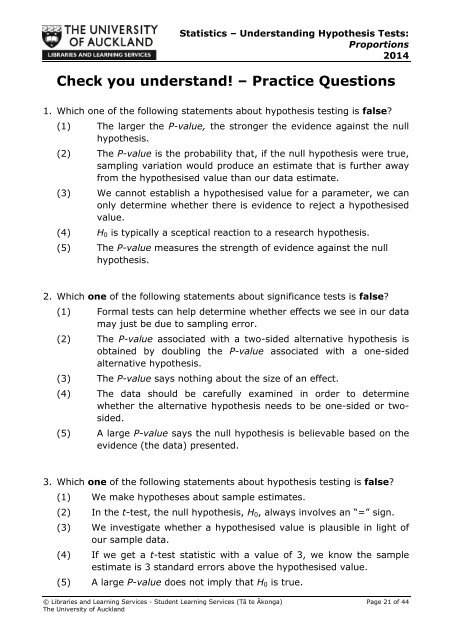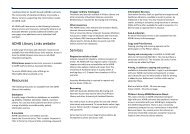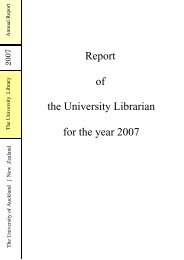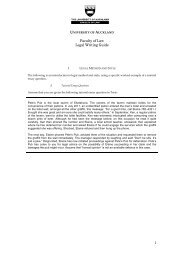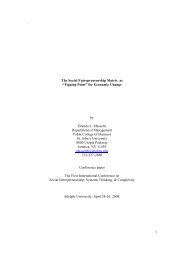STATISTICS â UNDERSTANDING HYPOTHESIS TESTS
STATISTICS â UNDERSTANDING HYPOTHESIS TESTS
STATISTICS â UNDERSTANDING HYPOTHESIS TESTS
You also want an ePaper? Increase the reach of your titles
YUMPU automatically turns print PDFs into web optimized ePapers that Google loves.
Statistics – Understanding Hypothesis Tests:Proportions2014Check you understand! – Practice Questions1. Which one of the following statements about hypothesis testing is false?(1) The larger the P-value, the stronger the evidence against the nullhypothesis.(2) The P-value is the probability that, if the null hypothesis were true,sampling variation would produce an estimate that is further awayfrom the hypothesised value than our data estimate.(3) We cannot establish a hypothesised value for a parameter, we canonly determine whether there is evidence to reject a hypothesisedvalue.(4) H 0 is typically a sceptical reaction to a research hypothesis.(5) The P-value measures the strength of evidence against the nullhypothesis.2. Which one of the following statements about significance tests is false?(1) Formal tests can help determine whether effects we see in our datamay just be due to sampling error.(2) The P-value associated with a two-sided alternative hypothesis isobtained by doubling the P-value associated with a one-sidedalternative hypothesis.(3) The P-value says nothing about the size of an effect.(4) The data should be carefully examined in order to determinewhether the alternative hypothesis needs to be one-sided or twosided.(5) A large P-value says the null hypothesis is believable based on theevidence (the data) presented.3. Which one of the following statements about hypothesis testing is false?(1) We make hypotheses about sample estimates.(2) In the t-test, the null hypothesis, H 0 , always involves an “=” sign.(3) We investigate whether a hypothesised value is plausible in light ofour sample data.(4) If we get a t-test statistic with a value of 3, we know the sampleestimate is 3 standard errors above the hypothesised value.(5) A large P-value does not imply that H 0 is true.© Libraries and Learning Services - Student Learning Services (Tā te Ākonga) Page 21 of 44The University of Auckland


